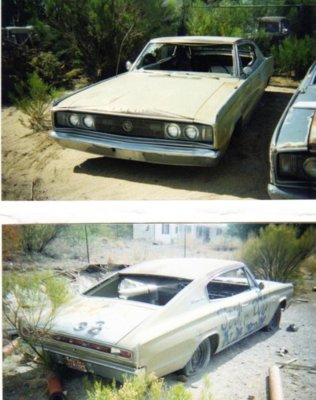vman01
Well-Known Member
67 charger front end I am adjusting has always been sensitive going down the road (I suspected -castor). I purchased the offset UCA bushings and also a bubble gauge to check settings before and after.
My before settings in degrees:
D side -1.2 camber, -3 castor----- P side +.750 camber -3 castor
I maxed out the front of each UCA out toward the fender and the back of each UCA in toward frame.
D side +.250 camber, +1.5 castor ------ P side +3.5 camber, +.5 castor
Lastly I adjusted the ride height up to remove some of the Positive camber and then adjusted the passenger side to best castor possible setting by moving the front of the UCA in.
D side +.750 camber, +1.5 castor ------- P side+.750 camber, - 2 castor
I am concerned by the variance side to side and being able to achieve -.5 camber, +1.5-2 castor with the offset bushings. The problem being the passenger side as I still had room to adjust the drivers side from current position. Is modifying the LCA an option or is there something else causing this. I checked the upper and lower ball joints don't seem to have any play and the wheel bearings are set correctly then double checked the numbers to verify I got them right..
Suggestions welcome.
My before settings in degrees:
D side -1.2 camber, -3 castor----- P side +.750 camber -3 castor
I maxed out the front of each UCA out toward the fender and the back of each UCA in toward frame.
D side +.250 camber, +1.5 castor ------ P side +3.5 camber, +.5 castor
Lastly I adjusted the ride height up to remove some of the Positive camber and then adjusted the passenger side to best castor possible setting by moving the front of the UCA in.
D side +.750 camber, +1.5 castor ------- P side+.750 camber, - 2 castor
I am concerned by the variance side to side and being able to achieve -.5 camber, +1.5-2 castor with the offset bushings. The problem being the passenger side as I still had room to adjust the drivers side from current position. Is modifying the LCA an option or is there something else causing this. I checked the upper and lower ball joints don't seem to have any play and the wheel bearings are set correctly then double checked the numbers to verify I got them right..
Suggestions welcome.

















